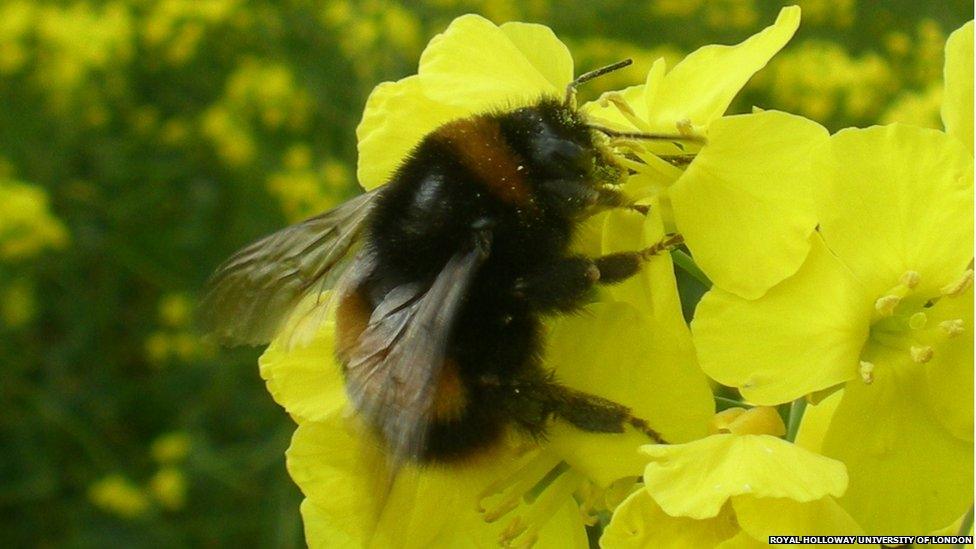Bumblebees: Pesticide 'reduces queen egg development'
- Published

Bumblebees may come into contact with pesticides when foraging or nesting
Use of a common pesticide in spring could have an impact on wild bumblebees by interfering with their life cycle, a UK study suggests.
The team, who looked at wild bumblebees caught in the English countryside, say the insecticide, thiamethoxam, reduces egg development in queen bees.
They say this is likely to reduce bee populations later in the year.
Thiamethoxam is one of three neonicotinoid insecticides currently restricted for use by the EU, external.
They have been restricted amid concerns about their impact on wild bees.
The study, published in Proceedings of the Royal Society B, external, investigated the impact of thiamethoxam on four species of bumblebee queen which had been captured in the wild in spring.
The effects of the insecticide at levels deemed similar to those encountered in the wild were investigated in the laboratory.
After two weeks of exposure, two of the four species of bumblebee took in less food.
And there were effects on egg development in all four species.
"We consistently found that neonicotinoid exposure, at levels mimicking exposure that queens could experience in agricultural landscapes, resulted in reduced ovary development in queens of all four species we tested," said lead researcher, Dr Gemma Baron of Royal Holloway University of London.
"Impacts of neonicotinoid exposure on feeding behaviour were species-specific, with two out of four species eating less artificial nectar when exposed to the pesticide.

Bumblebees are known to forage on crops such as oilseed rape
"These impacts are likely to reduce the success of bumblebee queens in the spring, with knock-on effects for bee populations later in the year."
The scientists say the work provides "a major step forward" in understanding the impact of neonicotinoids on wild bees - both generally and in specific species.
They say bumblebee queens are not currently considered in pesticide risk assessments for pollinating insects.
Prof Mark Brown of Royal Holloway University of London said: "Future studies across different species are likely to demonstrate further variation in the impact of neonicotinoids, and conducting such studies needs to be a priority for scientists and governments."
Social life of bees
Bumblebees are social insects, living in colonies. When the queens emerge in early spring, having spent the winter hibernating alone, they go out in search of food and a place to nest.
They are likely to be exposed to pesticides as they forage on flowers in agricultural areas.
Each queen forms its own nest, lays its eggs, and produces a few hundred daughter workers.
Towards the end of the season, males and new queens hatch, then emerge from the nest to go in search of a mate.
Only fertilised queens go on to hibernate, after feeding heavily on pollen and nectar to build up fat stores.
Bumblebees are in decline globally, due to threats from pathogens, loss of habitat and pesticides.
Follow Helen on Twitter, external.
- Published15 March 2017
